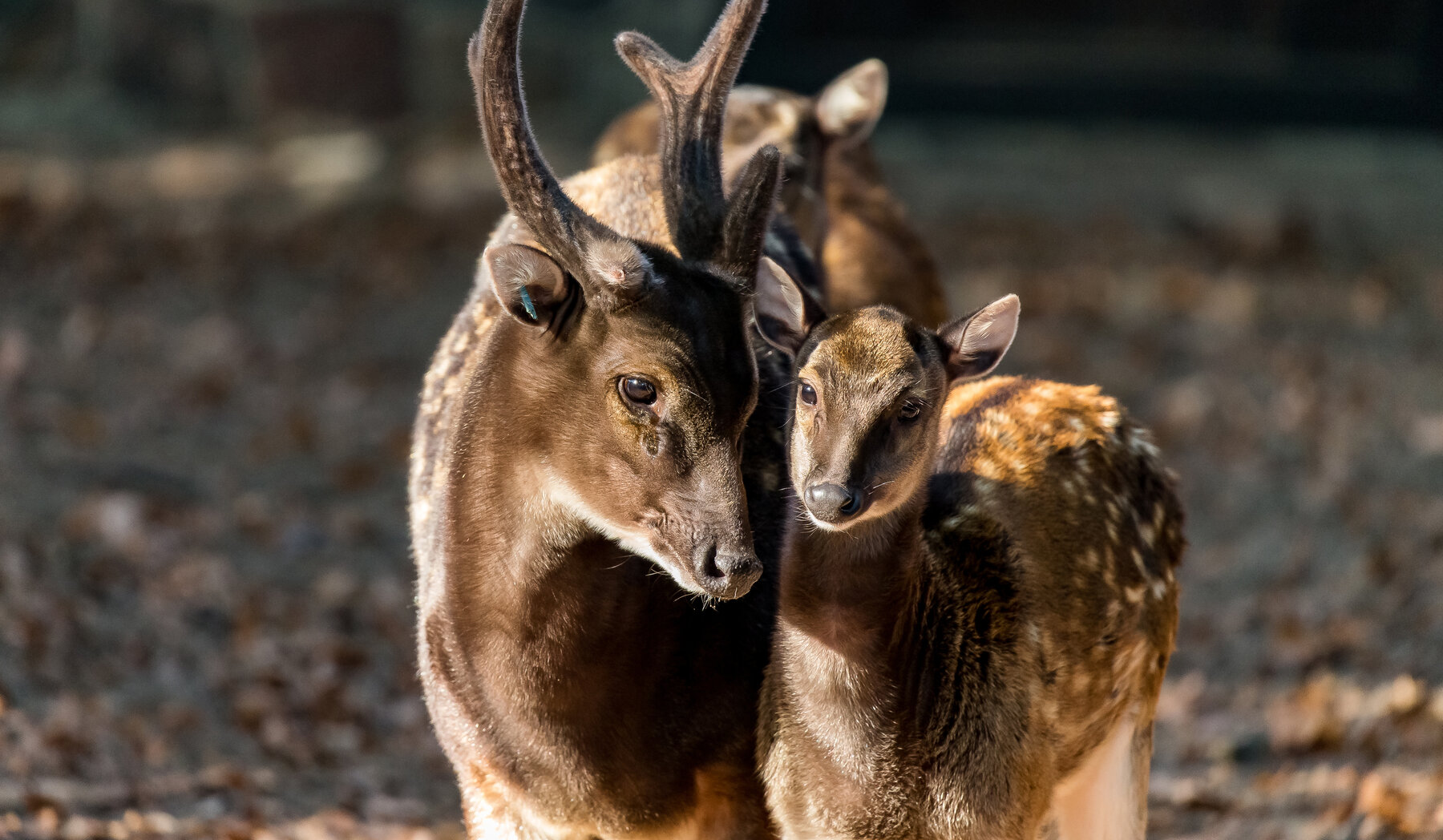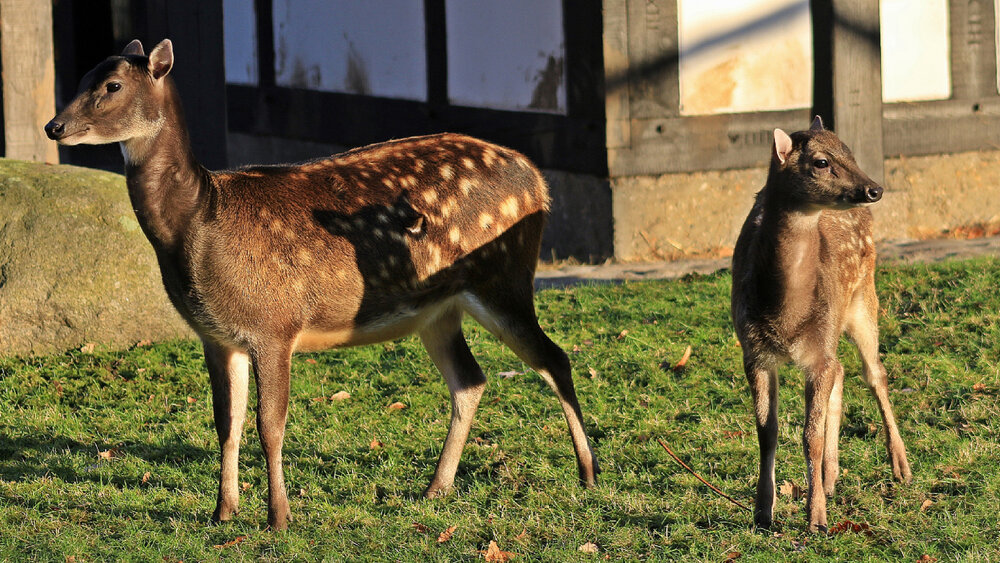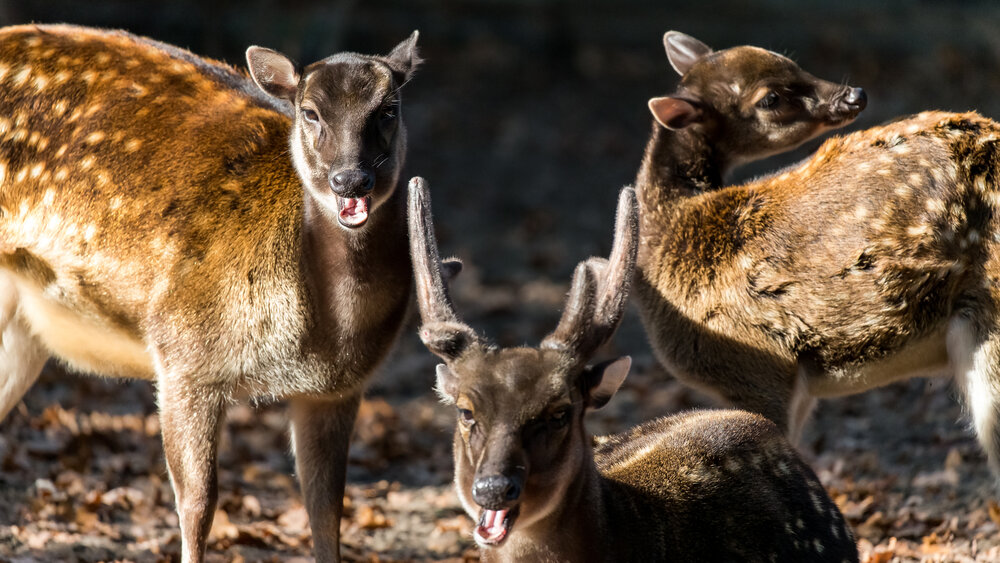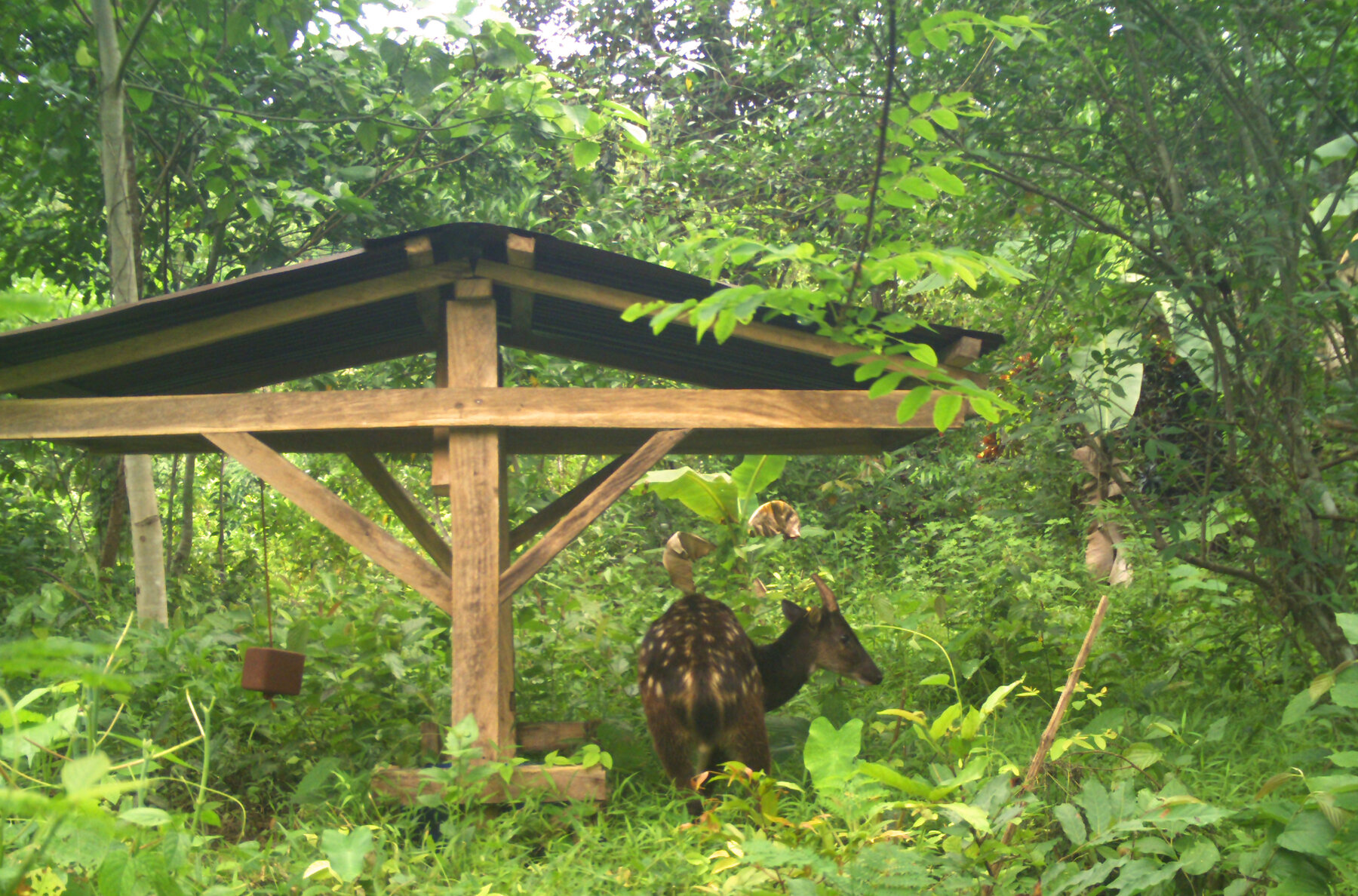
Philippine Spotted Deer
Zoo Berlin supports the Talarak Foundation Inc. in its efforts to save the Philippine Spotted Deer and protect species diversity in the Philippines.
Project facts
- Project name
Talarak Foundation Inc.
- Species
Philippine Spotted Deer (Rusa alfredi)
- IUCN threatened status
Endangered (EN)
- Project location
Visayas, Republic of the Philippines
- Greatest threat
Loss of habitat due to expansion of human settlements and agriculture
- Response
Breeding at zoos across the world and research stations on site; establishing conservation areas
Threat Categories of IUCN


Berlin and the Philippine Spotted Deer
With a shoulder height of just 60 to 70 cm, the Philippine Spotted Deer is one of the world’s smallest deer species. The deer first arrived in Berlin as far back as 1874, when Germany’s oldest zoo received an individual from London. After many decades of absence, this endangered deer species eventually returned to Berlin in 1994.
Important role in global conservation efforts
The deer couple that arrived in Berlin in 1994 came here from Mulhouse in France. They bred very successfully and their young went on to populate many other European zoos. There are now around 150 Philippine Spotted Deer living in the care of humans worldwide, and Zoo Berlin has made a considerable contribution to that positive development. The breeding of Philippine Spotted Deer is coordinated by a European Endangered Species Programme (EEP).
The Visayas – home to the world’s most threatened deer
Back in 1987, Zoo Berlin supported a project studying Philippine Spotted Deer in their natural habitat. This represented the first-ever species conservation project in the Philippines to be funded by seed capital. At that time, there were fewer than 100 of the deer on the Visayan island of Panay; now it is the only place in the world where they still live in the wild. According to the IUCN, the Philippine Spotted Deer is the rarest deer species on Earth. It used to be found throughout the Central Visayan region on the four islands of Negros, Panay, Masbate and Cebu.
Habitat destruction poses greatest threat
As a result of the human population boom, great swathes of woodland have been lost on the numerous islands that make up the Philippines. Once upon a time, forest covered 90 percent of the land on the island of Panay; now only seven percent is wooded. The various islands are isolated from one another and are home to many endemic species – including the Philippine Spotted Deer. These days, most of those species are threatened. The island of Cebu has gained notoriety for having had more of its natural environment destroyed than any other rainforest island in the world.
To the rescue!
The Philippine Spotted Deer is the largest land animal in the Philippines. In the 1980s it was believed to be almost extinct, but now there is a relatively stable population in the world’s zoological facilities – not least thanks to the breeding efforts of Zoo Berlin. Zoo Berlin is supporting the Talarak Foundation Inc. (TFI). Founded in 2010, this non-profit organisation has the goal of ensuring the long-term protection of threatened and rare Philippine biodiversity. Donations to the foundation have allowed it to set up three on-site breeding stations, which are all experiencing success with their breeding pairs. The stations are located at Silliman University and the Negros Forest Ecological Foundation Inc. (NFEFI) on the island of Negros, and at West Visayas State University on Panay.
Conservation areas and sustainable agriculture
Because of the severe lack of natural habitat, the deer at the breeding stations cannot yet be released into the wild. But after a management plan was developed for the last remaining areas of woodland on Panay, the approximately 60,000-hectare Panay Mountain National Park was established and placed under protection. Last year, some male and female Philippine Spotted Deer were successfully released into the wild into a 300-hectare reserve on Negros. There are already offspring.
West Visayas State University is also testing out more eco-friendly cultivation methods that could offer an alternative source of income for the local population. The Philippine Spotted Deer can only survive if the impoverished people who live in the Visayas can be convinced of the importance of species protection efforts.
Photos: © Talarak Foundation Inc.


